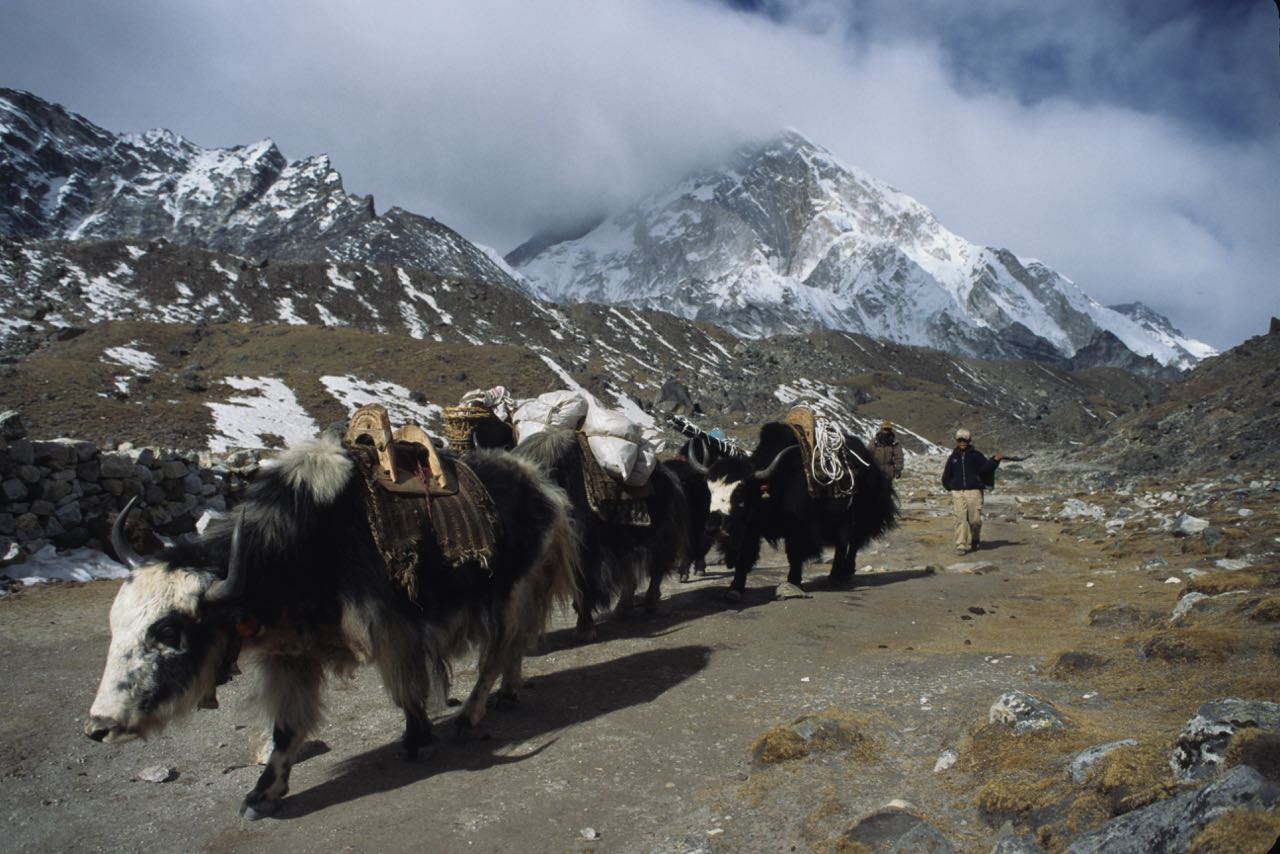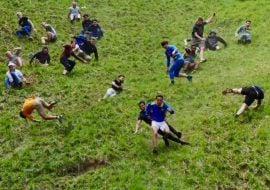Trekking Everest Base Camp On A Budget


Guide To Everest Base Camp
I wake up in the dark, and wonder if daylight is coming soon. With my headlamp, I check the time. It is 5:00 AM, and I am fully awake. In my warm sleeping bag, I wait for the grey of dawn.
The day begins, and I reach out and push open the door. A rush of cold air enters the room and I am looking at the Himalayas. They seem almost close enough to touch. To pass the time I read a book, and wait for the hotel owner to start her morning routine.
She steps out onto the deck, into the sunlight. In a bowl she lights a handful of juniper bush as an offering to her Gods. She is a Tibetan woman in her mid thirties who has dignified facial features and her hair is in a long ponytail down her back. She smiles at me in my mountain of down filled gear, and moves back into the kitchen.
Smoke begins to seep out of the rough hut. The woman is making the morning fire; I know tea will be available soon…
Trekking to Everest has become an essential part of every budget traveler’s Asian journey, and for good reason too. Besides a chance to see the highest mountains in the world, the local people of the region make a trek here the trip of a lifetime.
A traveler’s first trek in Nepal can be intimidating, but there is no need to worry. Organizing a trek for the budget traveler is far easier than in other Asian countries. A few days are spent in Kathmandu arranging trekking permits and buying a few essentials, and then on to the trek.
A favorite area to stay for many budget backpack travelers is Thamel, a rabbit warren of cheap hotels and inexpensive restaurants. One thing that many travelers wonder about is what to do with their excess gear while trekking. Most lodges in Thamel will store your extra gear for you for free while you are on your trek, provided you stay there again when you return. I have stored my gear in lodges many times, and never had any problem.
Starting Everest trek in Jiri

The village of Tengboche, Khumjung
The classic start for the Everest trek is from the small village of Jiri. The bus to Jiri leaves from the ‘old’ bus station in Kathmandu. The bus park is a short walk from Thamel, and it is worthwhile to go there yourself (instead of through an agent) and buy the ticket because there is a seating assignment. It is slightly more comfortable to get a seat in the front. The bus to Jiri is 9 hours or more. This is a rough bus ride, as are all bus rides in Nepal.
After the rugged bus ride to Jiri, the trek to Everest is pretty hassle free traveling. Along the main trekking trail to Everest there are small villages where there is at least one trekkers lodge. The smaller ones will cater specifically to independent trekkers, and are too tiny for organized groups anyway.
Once on the trail there is little to worry about. Instead of wilderness, you hike through countryside free of roads yet filled with medieval villages and terraced fields. In the morning you pack your backpack, spend the day walking through farms and pristine nature, and in the evening chat with other trekkers while waiting for dinner to be served.
Trekking is a cultural experience. The traveler is completely immersed in the culture and in touch with the people, the environment, and the wild animals. Although trekking alone is not entirely recommended, you will meet plenty of solo hikers. Although it is not an easy undertaking, anyone who is in reasonable physical condition and has some backpacking experience can do an extended trip to the base of Everest.
The Route to Everest Base Camp

The view to the top from Everest Base Camp
The trek is challenging. Plenty of physical effort is required for climbing the hills. There are three high passes between Jiri and Namche, and all of them are about 10,000 feet high. The last climb to Kalla Pattar is more than 17,000 feet. This is not a trek for the faint of heart. There are few roads extending into the Himalaya, and it is necessary to walk for days or weeks to reach many destinations.
The Himalayas have always isolated Nepal, and the ruggedness of these mountains continues to insulate the people, customs, and religions from the outside world. The mountains in Nepal have been inhabited for centuries. The routes through these hills have been well traveled by local Nepalese for many generations, and sharing the trails with the local people greatly enhances the journey.
Local Food On The Trail
The most common food in the mountain lodges is dhal bhat, a mixture of a thick lentil soup and rice. It might also have some potatoes or other local vegetables. This is the classic rice and bean combination that is the diet of many of the people on the earth. I find it entirely satisfying.
What To Budget

Sunshine over Everest
I usually budget about $25 a day for my time in the mountains. This budget will cover lodge and food. However it can sometimes cost less than that, sometimes even as low as $10 or $15 on some days.
Photos by Laurence Morgan
Related articles:
10 Of The Best Treks In Nepal
Trekking The Annapurna Camp On A Budget
Last updated on May 7, 2018Have you subscribed to our Newsletter or Podcast? Listen to us on Apple Podcast and Spotify and follow us on Facebook, Instagram Twitter and YouTube.








